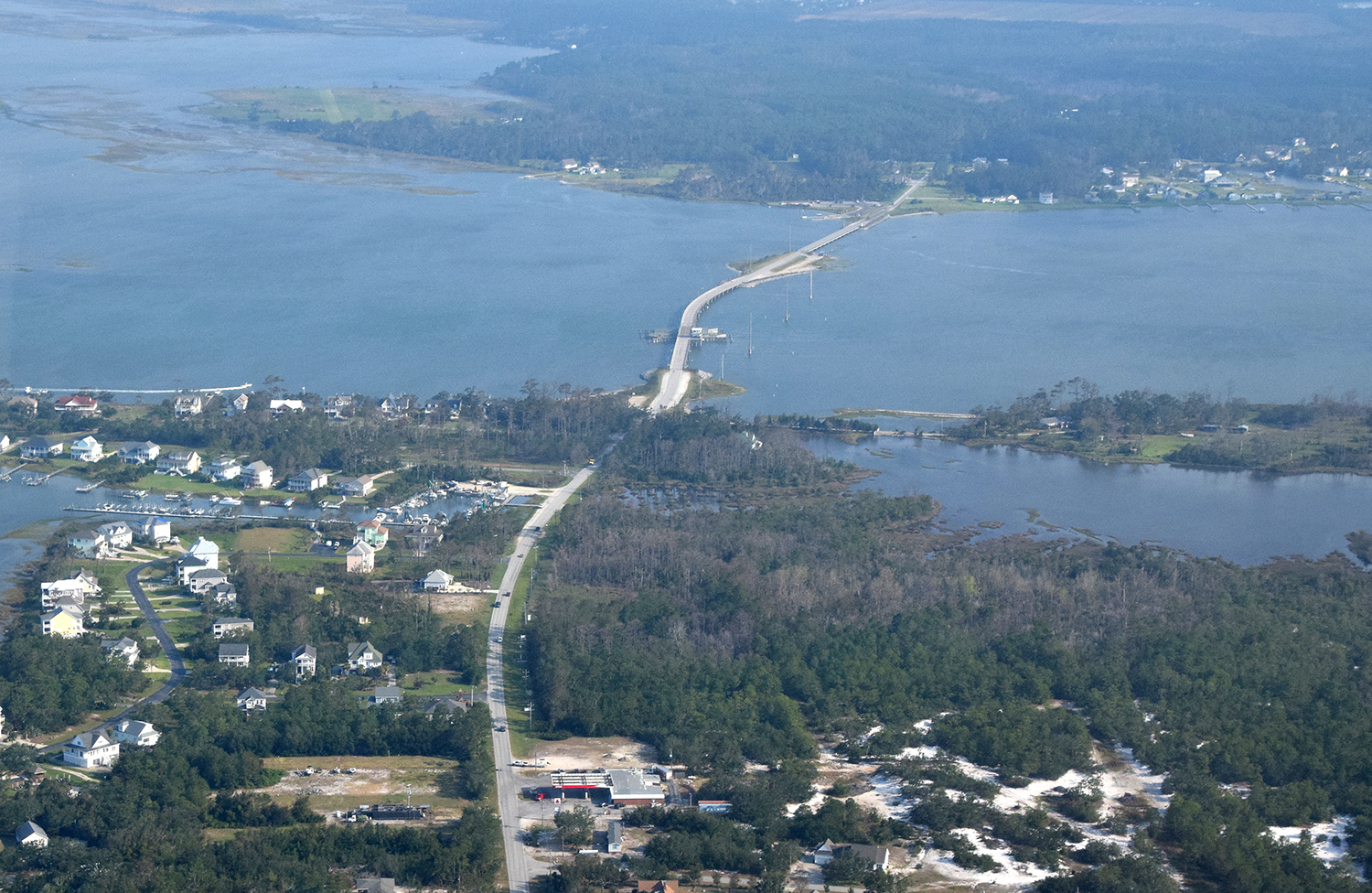
Harkers Island property owners are one step closer to being able to challenge a state environmental permit that authorizes the construction of a fixed-span bridge from the mainland to the Down East island.
Superior Court Judge Charles Henry last month overturned Coastal Resources Commission Chair Renee Cahoon’s May 2019 denial of four property owners to appeal the permit issued to the North Carolina Department of Transportation.
Supporter Spotlight
In his April 24 ruling that grants the property owners’ the right to judicial review, Henry concluded their allegations of Coastal Area Management Act statutory and rule violations were not “frivolous” as determined by the commission.
Larry Baldwin, who is vice-chair of the CRC, his wife, Elizabeth, and neighboring property owners Hollis and Carol Batson argue the project did not receive a proper environmental review and that the bridge design would critically impact local waterways, shorelines and public trust areas.

“In a nutshell the DOT design is horrible in my viewpoint based on my consulting background, based on my experience with CAMA rules and regulations,” Baldwin said in a telephone interview. “We’ve got polluted waters on the back of our properties and that’s due to the current bridge, and the design they’re putting in doesn’t even address those issues.”
New Bern-based attorney Clark Wright, who represents the Baldwins and Batsons, filed a petition on Tuesday with the Office of Administrative Hearings requesting the case be assigned to an administrative law judge.
The petition also asks for formal mediation between the parties, which include the property owners, North Carolina Department of Environmental Quality and CRC.
Supporter Spotlight
“All we’ve asked for during these last three years is to sit down with DOT for a forced mediation arbitration,” Baldwin said.
The department plans to replace the Earl C. Davis Memorial Bridge, a swing-span bridge, and Bridge No. 96, both of which connect the Straits township on the mainland to Harkers Island. The bridges are more than 45 years old.
NCDOT selected from one of five alternative replacement options in 2017 – a fixed-span bridge with a 45-foot vertical navigational clearance through the channel.
The swing bridge will be removed. The other bridge will remain and used as a pedestrian access to the Straits Fishing Pier.
The latest estimated cost is $39.9 million.
The project was initially expected to go out for bids this summer, but department officials are projecting a $300 million budget shortfall this year, a result of the pandemic, which has caused traffic volumes to decrease significantly, according to the state transportation website.
“At this time we expect to award a contract in September,” Lauren Haviland, NCDOT communications officer, said in an email. “It is important to note, we cannot award a contract if litigation is ongoing or we are below the cash floor (when that happens we can’t enter into new contracts).”
In the May 12 petition, Wright states that his clients are “ready, willing and able” to participate in an expedited hearing so that a judge may issue a decision by Sept. 30 or soon thereafter.
The state Division of Coastal Management’s issuance of the CAMA major permit May 1, 2019, deprived the Baldwins and Batsons of protected property rights, the petition states.
Their properties back up to Janes Creek, a shallow estuary that is not designated by the U.S. Fish and Wildlife Service as primary nursery area, but a waterway, Baldwin contends, functions as such.
The Baldwins have lived in their home on the island full time for the past 20 years. The Batsons, according to the petition, do not reside on their island land, “but use and enjoy the same.”
The two couples placed common properties that border their lots into a homeowners association, which is listed on the petition as Baldwin Batson Owners Association Inc.
“There’s a lot of precious coastal resources out there and water quality issues,” Baldwin said.
The impact to those resources were not properly addressed in a review process, the property owners say.
An environmental impact study was not conducted. NCDOT instead conducted an expedited review, one that was completed in five months.
The 1968 NCDOT right-of-way causeway has caused sedimentation, erosion, shoaling, and ebb and flow reduction in the creek’s watershed, the petition states.
In 2017, the creek was permanently closed to shellfishing.
Janes Creek also drains about 25% of the island.
The proposed bridge design would route stormwater runoff into pipes that would dump into the creek, which would increase the potential for flooding, the property owners argue.
Impacts to Janes Creek, the Straits, a channel that runs about 1½ miles north of the island, and their estuaries on the southern end of the proposed bridge “represent a serious and material failure of the permitting review process,” the petition states.
The design of an 8- to 20-foot-high concrete bulkhead on the island side of the proposed replacement bridge does not take into consideration potential impacts of adjacent erosion, shoaling, sedimentation and storm damage to public trust areas, riparian and littoral areas, and tidal flow blockage, according to the petition.
The property owners argue that the CAMA major permit was issued erroneously because portions of their lots were not condemned by NCDOT until four months after the department applied for the permit in December 2018.
“That’s on the (CAMA) application,” Baldwin said. “They sign it that it’s truthful. At that point in time they didn’t own anything on our property.”
They also argue that the department should align power lines that will be relocated with the new bridge in the right-of-way. The current design zig-zags above-ground power lines five times across the project area, which would not minimize impacts because all of 15 existing poles and lines “have been, or will be, replaced or relocated,” according to the petition.
The property owners have had on-again, off-again informal mediations with NCDOT and the CRC, first after they appealed on July 3, 2019, the CRC’s decision in Carteret County Superior Court.
They filed for a temporary restraining order in November 2019 in an effort to stop utilities construction NCDOT initiated on and around their properties.
As a result of that filing, NCDOT and CRC officials met with the property owners that December at the transportation department’s headquarters in Raleigh.
The property owners again filed for a temporary restraining order on March 2 of this year after NCDOT started to work on utilities. The court issued the restraining order March 3.
The property owners are asking the Office of Administrative Hearings to overturn the CAMA major permit and remand the matter back to DEQ for “further appropriate and lawful permitting review.”
“We are not objecting to the replacement of this bridge,” Baldwin said. “We know it has to be done, but they have to be able to do it in a fair fashion and environmentally sensitive fashion.”








